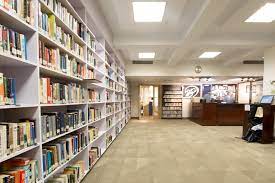Last Updated on March 26, 2024 by Faisal Khan
Any academic or research institution would not be complete without a library. Libraries are the leading educational platform, especially for technical training. Due to the rapid pace at which technology advances across various fields of science and technology (S and T), libraries need to keep up with the latest technology for information dissemination to be efficient, cost-effective, accessible, and practical.
A library’s value is dependent on its collection. It is essential to select and maintain a robust and high-quality collection of documents such as periodicals, books, and handbooks. A well-organised library is designed to meet the needs of researchers, scientists, scholars, students, and other users. The types of collections that are available will significantly impact the quality of services and patron satisfaction. To meet users’ information needs, a balanced, complete, and current collection must include documents in different formats.
Offering its users high-quality services is a library’s main objective. A great librarian must make customer satisfaction her top priority. The library should have a wide selection of papers in addition to being well-equipped. To offer better services, the library must make use of cutting-edge technology.
Due to the rapid increase in information, the demand and expectations for communication have increased significantly. Libraries must be equipped to store and retrieve information at the most current level to meet these demands.
Information technology has advanced thanks to the development of computers and the Internet. Digital or electronic libraries have become more popular as a result of this. Recent advances in information technology, telecommunications and software have led to a paradigm shift in libraries and information technology. The development of virtual libraries and online libraries has been made possible by networking technologies. Because they offer instant access to information, they are loved by all who use them. The world has transformed into a “global Village,” where everyone has access to the information they require via networking, computer software, scanning, and scanning technology.
Because all information is stored digitally, digital libraries are exact replicas of traditional libraries. A digital library’s data includes streams of images, photographs, illustrations, and other non-textual content like artwork, drawings, and numerical information (satellite or cosmological), digitized sound and moving images, and traditional text-based details.
Many medical colleges have numerous libraries that can be used to increase the quality and standard of services. Research and education in medicine will both benefit from this. The success of digitization and the networking of libraries depends on the attitude of librarians.
A literature review
Various sources were used to develop the idea for the study, including published and unpublished information. The rapid dissemination of accurate information at reasonable prices to the right user has been dramatically facilitated by digitization and networking in knowledge and library science.
These are the goals of the proposed study:The proposed study’s objectives are as follows:
1.) To assess the contributions and attitudes of librarians to the achievement of digitization and networking within libraries at medical colleges
2.) To assess the quality and extent of the collections in the library at the medical colleges’ libraries
3.) To examine the extent to which digitization has been achieved in the medical college libraries.
4.) To examine the methods used to network and digitise the library of medical colleges
5.) To review the current library services and facilities offered by medical colleges’ libraries
6.) To study the digitization process and network within the library at the Medical College Libraries.
7) To examine the efficiency and effectiveness of digitization networking processes in libraries at medical colleges
8.) To assess the acceptance and need for the digitalization of the medical college library.
9) To analyze the problems and difficulties librarians face when trying to digitise and network within the library of medical colleges
10) To identify the barriers that prevent libraries from digitizing and networking.
The libraries of medical colleges are examined to accomplish this. They can provide an MBBS course of study because they have received approval from the Medical Council of India (MCI). They can also confer an award for an MBBS or other related degrees in medicine and surgery.

